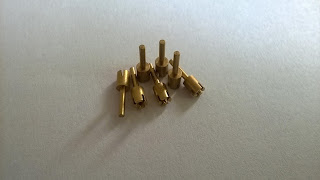Tactile Sensory
Next to vision in importance is tactile sensing or touching. Imagine the
blind can do delicate jobs relying on his/her sensitive tactile.Cnc machining A blind robot
can be extremely effective in performing an assembly task using only a sense of
touch. Touch is of particular importance for providing feedback necessary to
grip delicate objects firmly without causing damage to them.
To
simulate tactile in human hands, a complete tactile-sensing system must perform
three fundamental sensing operations: (1) joint force sensing which senses the
force applied to the robot’s hand, wrist and arm joints; (2) touch sensing
which senses the pressure applied to various points on the hand’s surface or
the gripper’s surface; (3) slip sensing which senses any movement of the object
while it is being grasped.
The
joint forces are usually sensed using various strain gauges arranged in robot
wrist assembly.Cnc machining A strain gauge is a force—sensing element whose resistance
change in proportion to the amount of the force applied to the element. The
simplest application of touch sensor is a gripper equipped with an array of
miniature microswitches. This type of sensor can only determine the presence or
absence of an object at a particular point or an array of points of the robot
hand. A more advanced type of touch sensors uses arrays of pressure-sensitive
piezoelectric material (conductive rubber or foam, etc.). The arrangement
allows the sensor to perceive changes in force and pressure within the robot
hand. Since the force at each point can be determined, the force on its surface
can be mapped and the shapes of objects grasped in the robot hand can be
determined respectively. Slip sensing is required for a robot to create the
optimum amount of grasping force applied to be picked up without the danger of
being dropped. The gripping force is increased step by step until the object
has been firmly grasped and no more slip occurs
The
integration of tactile sensing and vision sensing can dramatically enhance
robotic assembly task. An example of this type of sensors would be a vision
sensor used to locate and identify objects and positing of the robot itself,
combined with a tactile sensor used to detect the distribution of force and
pressure, and determine torque, Cnc machiningweight, center of mass and compliance of the
material it handles. The hand-eye coordination for general-purpose manipulation
will be extremely powerful in the industrial world.

没有评论:
发表评论